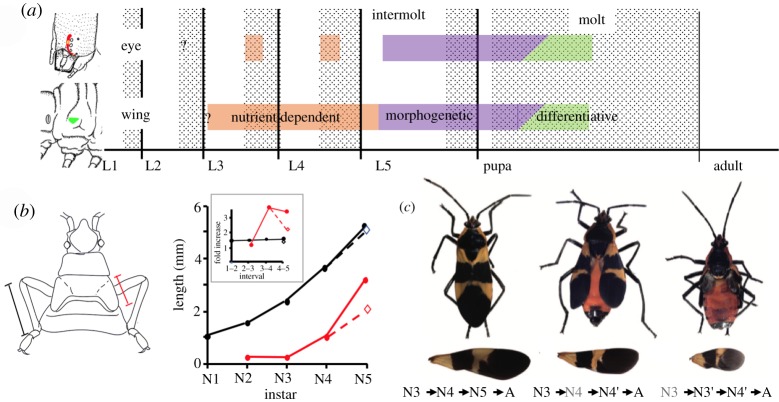Figure 3.
(a) Comparison of proliferation in early- and late-forming imaginal discs of M. sexta. The eye and wing imaginal primordia go through phases of nutrient-dependent proliferation (orange), morphogenetic proliferation (purple) and differentiative proliferation (green). Both primordia show nutrient-dependent growth in preterminal instars, but proliferation in the eye primordium is restricted to early in larval moults. Both primordia initiate morphogenetic growth early in the last instar and shift to differentiative divisions during the formation of the adult [24,33]. (b and c) Effects of br-dsRNA treatment on patterns of nymphal growth of O. fasciatus. (b) Growth of the leg (black) and wing pad (red) through the nymphal instars. The leg grows by a constant ratio throughout, but the wing pad shows enhanced growth during the last two nymphal moults. Suppression of Broad expression by injection of br-dsRNA in the 4th nymphal (N4) instar redirects the growth of the wing pad in line with the rest of the nymph (open symbol) (data from [34]). (c) Pictures of adults and their isolated forewings contrasting an animal going through a normal nymphal series (N#) to adult (A) with nymphs that were injected with br-dsRNA at the N4 or N3 instars (green). Subsequent instars repeat the features of the preceding instar and wing growth is suppressed (from [34]). (Online version in colour.)

